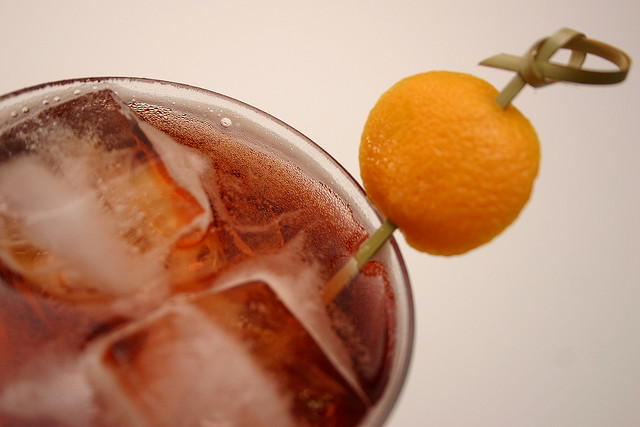Low Proof: The Art Of The Low Octane Cocktail
By Melissa McEwen in Food on Jun 24, 2014 8:30PM
Thanks to the craft cocktail movement, it’s not hard to find a well-made cocktail these days. But most cocktail menus are full of drinks that are liberal with the high-proof spirits. It can be hard to find a drink that delivers flavor without an aggressive dose of booze. But delicious lower proof drinks were always part of the cocktail world and thankfully bartenders are rediscovering them.
Being a little over five feet tall, I’ve always had to be careful with cocktails. I’ve learned my fair share of lessons from Sazeracs and Old-fashioneds. The lesson being, if I choose a drink like that I better have lined my stomach with plenty of food and I better not order another drink. Since my brain interprets drunk as sleepy, I was delighted to discover full-flavored vermouth-based cocktails at the now-shuttered Incanto in San Francisco. For once I managed to make it mid-meal without begging for an espresso to cancel out my cocktail.
It’s not only those of elfin proportions who might want a less aggressively alcoholic drink. Low-proof cocktails also make sense for those who are less efficient at metabolizing alcohol for genetic reasons or who need to drive home (which is why low-proof cocktails have gained prominence in sprawling Atlanta). Maybe you just want a before-dinner drink on an empty stomach or a cocktail that won’t overpower foods when paired with a meal. Or it could be that you already had a strong drink and only have room for something a bit lighter.
Unfortunately, in many bars the use of a word like “lighter” is likely to land you a cocktail that’s pink and sweet. Dinah Sanders, who wrote a book on low-proof cocktails called The Art Of The Shim, recommends people take a different tact: ask specifically for lower proof and be explicit about your personal tastes. I’ve found success with the Sanders-endorsed tactic of telling the bartender my tastes lean toward bitter, brown and stirred. The other important trick is knowing the major low-proof classics and their base spirits so you can ask for them specifically.
Different authorities define low-proof differently, and there are several names from “low-proof” to “supressor” to “shim.” Sanders defines a shim as “a cocktail containing no more than half an ounce of strong spirits—those of 40 percent alcohol by volume (ABV) or above.” To put it in context, she says that is less alcohol than the average 6-ounce glass of wine. But if the drinks menu doesn’t signify which drinks, if any, are low-proof, looking over the ingredients won’t help much unless the base spirit is one that is naturally lower proof.
Luckily, many of these lower proof base spirits such as amaro, sherry, and vermouth are now trendy on their own, leading bars to expand their selection and stock high-quality bottles. If the menu lists out the ingredients and there isn’t a high-proof spirit like vodka or rum on the list for a particular cocktail, you may have stumbled across a low-proof cocktail in the wild. A recent spotting I made was Kinmont’s (419 W Superior St.) “Genuine Hope,” which contains two types of vermouth, Punt E Mes and Lillet Blanc, as the base spirits.
If you are stumped by a cocktail menu that only has drinks with high-proof base spirits, one of the easiest low-proof cocktails to ask for is the classic Americano, the ancestor of the now more famous Negroni. it’s easy to make, uses common ingredients, has a rich and complex flavor, and Sanders says it is very forgiving to differing proportions. It has just three simple elements in equal proportions: Campari, sweet vermouth, and club soda. Ideally it’s garnished with orange peel. The Americano is featured on the menu at the new Osteria Langhe (2824 W. Armitage Ave.) and Billy Sunday (3143 W. Logan Blvd.). I’ve successfully ordered them off-menu at several places including Bar Deville (701 N. Damen Ave.) and Bread & Wine (3732 W. Irving Park Rd.).
Sanders says low-proof cocktails have always been around and in fact some of the earliest cocktails may have been low-proof drinks like the sherry cobbler. She maintains that a low-proof cocktail should be something every good bartender has in their repertoire- “To be a great bartender, you need to be prepared to serve on the spectrum and be able to serve with the same craft.”
This is the start of a series here at Chicagoist focusing on low-proof cocktails. We hope to highlight the best, so stay-tuned for further chapters in the Low-Proof series.
